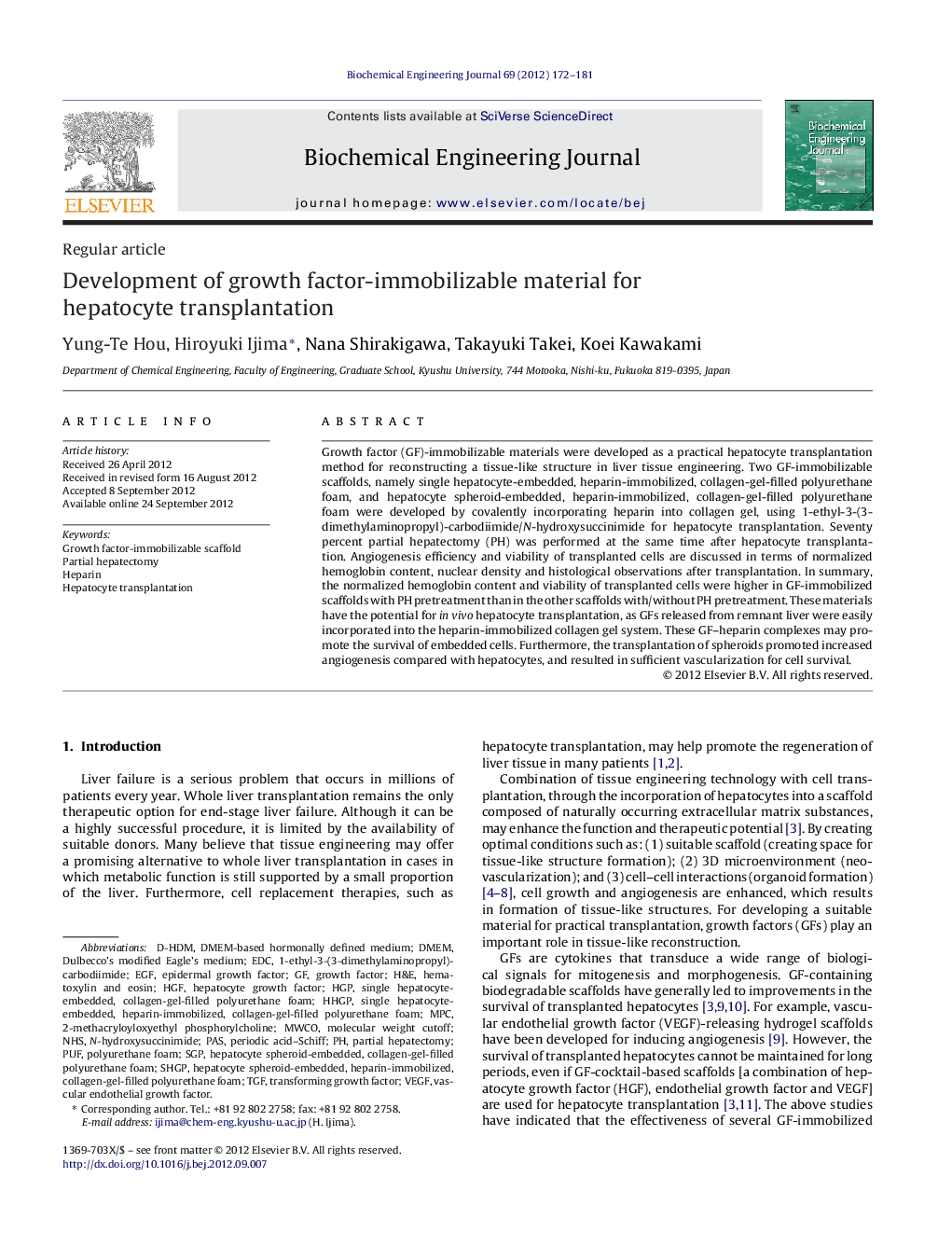| Article ID | Journal | Published Year | Pages | File Type |
|---|---|---|---|---|
| 3551 | Biochemical Engineering Journal | 2012 | 10 Pages |
Growth factor (GF)-immobilizable materials were developed as a practical hepatocyte transplantation method for reconstructing a tissue-like structure in liver tissue engineering. Two GF-immobilizable scaffolds, namely single hepatocyte-embedded, heparin-immobilized, collagen-gel-filled polyurethane foam, and hepatocyte spheroid-embedded, heparin-immobilized, collagen-gel-filled polyurethane foam were developed by covalently incorporating heparin into collagen gel, using 1-ethyl-3-(3-dimethylaminopropyl)-carbodiimide/N-hydroxysuccinimide for hepatocyte transplantation. Seventy percent partial hepatectomy (PH) was performed at the same time after hepatocyte transplantation. Angiogenesis efficiency and viability of transplanted cells are discussed in terms of normalized hemoglobin content, nuclear density and histological observations after transplantation. In summary, the normalized hemoglobin content and viability of transplanted cells were higher in GF-immobilized scaffolds with PH pretreatment than in the other scaffolds with/without PH pretreatment. These materials have the potential for in vivo hepatocyte transplantation, as GFs released from remnant liver were easily incorporated into the heparin-immobilized collagen gel system. These GF–heparin complexes may promote the survival of embedded cells. Furthermore, the transplantation of spheroids promoted increased angiogenesis compared with hepatocytes, and resulted in sufficient vascularization for cell survival.
► Growth factor-immobilizable material was developed for hepatocyte transplantation. ► Partial hepatectomy were used to promote growth factor secretion. ► This material is effective for the in vitro hepatocyte culture. ► Angiogenesis and viability of transplanted cells were improved in vivo.
